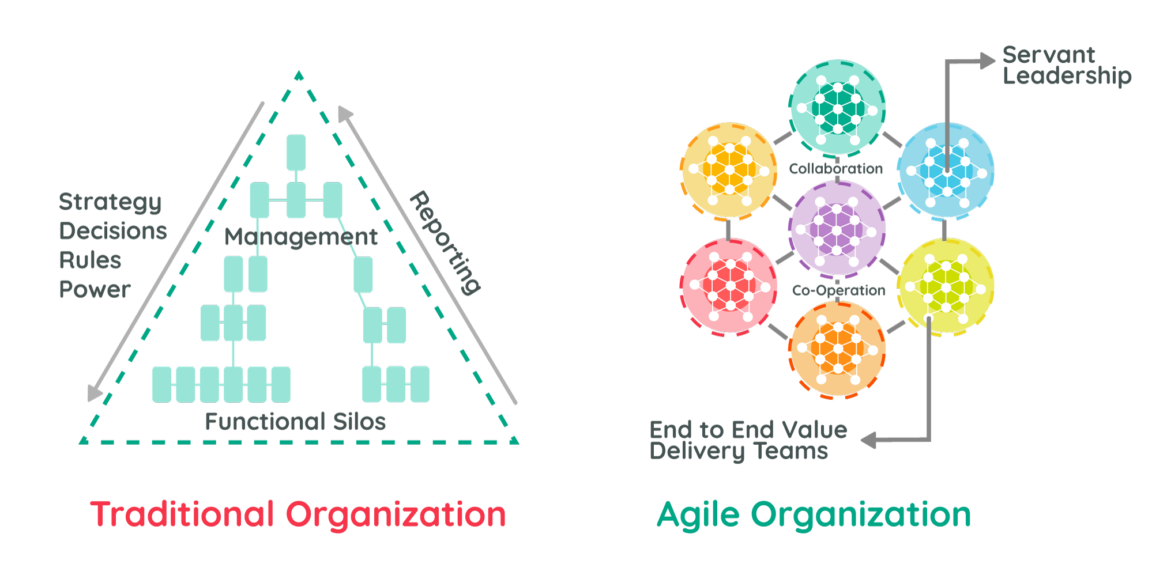Enterprise software development can get quite complicated for multi-tiered corporations. Having to agree on opinions from all levels of departments can delay software development projects or even damage the project, driving the project’s purpose away from the original purpose.
These problems often appear when businesses create software for internal use – especially when the business does not own an IT team. And if the business is building software with the goal of creating a new product for the public, the risks and challenges are even greater. At this time, the challenge lies not only in the issue of unifying internal opinions, but also in the race with competitors, customers and public opinion.
In any enterprise software development project (including both internal enterprise applications and software development for the market), the following two goals need to be met:
- Brands must ensure their budget and brand value are not affected.
- The software must generate enough profit for the invested capital and meet the correct timeline to prove the cost is effective.
So how can businesses ensure both of these pre-conditions in every software development project?
gumi gives you the following 5 steps. By following these five best practices when developing enterprise software solutions, you will no longer be afraid to manage any software development project in your business:
Focus on Core Software Products

First – and this is an absolute must – businesses should aim for a base functionality built on a robust system architecture, ensuring sustainability when expanding software development in the future. hybrid. Software products with core features are a solid foundation on which you can build additional supporting functions.
Development of secondary features should be done after the core software product has been successfully built and deployed. This helps ensure that you don’t lose focus and resources on features that aren’t important in the first place.
Set up warning bells in any form, such as warning bells when deadlines are exceeded to be timely or excessive working hours of a team member, warning in advance of situations that may affect the project. judgment occurs. This approach can help motivate and remind members to quickly return and focus on the overall goal, avoiding overload, delays, and ineffectiveness for the project.
Apply the Agile Response Software Development Process (Agile)

Agile software development processes like Agile help increase flexibility, rapid feedback, and continuous interaction between project members. Agile focuses on breaking projects into smaller phases, called “sprints,” and using short daily meetings to track progress and resolve problems. This method enhances adaptability and flexibility of change, while minimizing risks and helping the project move forward efficiently.
gumi recommends that you clearly define the point of contact – the spokesperson for each team. This could be a technical project manager, a software project manager, or a manager for each of your departments, but regardless of the title, you need someone who can understand the needs of the business as well as keep up with progress. , clearly understand the project situation before each new update.
With each contact point, responses will be consistent, faster and more accurate. From there, the project will avoid bad situations when there are too many parties involved and too many different needs that deviate from the project’s trajectory.
Focus on usability for the end user

Just as building a stable foundation is important, the enterprise software development process must prioritize usability for users. Technology solutions that are not usable should not be developed. That’s a problem for internal software development projects and an existential crisis if you’re trying to sell software products to others.
And of course, determining “usability level”, like valuable Insight in any Marketing campaign, is not simple. As a best practice, start asking questions by focusing on your core audience:
- What do they need to use this tool for?
- What challenges are they facing with current solutions?
- What is their level of proficiency?
- Their biggest pain point?
Once you understand your core customers’ biggest needs and challenges, you’ll begin to create a clearer picture of the usability of a given software product.
Integrate automated testing

Create prototypes of basic but fully functional versions of your desired software and distribute alpha and beta builds to a small group of test users. Based on their feedback, you can make further contributions to actively tweak and build the software on an ever-better basis.
This form helps you from zero to functional customized software with authentic practical experiences and faster implementation progress and better quality. From here, you can continue to develop new features, but it will certainly be quite easy once the foundation you build is solid.
DevOps is a method that combines software development and system operations processes to create a continuous, integrated, and automated work environment. By using DevOps, businesses can create a fast, reliable, and repeatable software development and deployment process. This helps reduce errors and conflicts during software development and deployment, while enhancing the ability to adapt and respond quickly to customer requests.
Cooperate with experienced software development experts

Finally, at a business scale, cooperation with an external software development company is a solution that brings outstanding value, chosen by many businesses.
Because businesses do not have software as their primary business, they will often lack the internal resources needed to develop software that is high quality, user-friendly, and focused on the ultimate goal. Especially in the context of a technology talent shortage and economic downturn, staffing to fill these resource gaps is difficult to do.
Typically, new software development is assigned to the internal IT team, which may not have a high budget or insufficient human resources to complete on schedule.
An enterprise software development company is the ideal solution to address these challenges. Enterprise software development services companies provide teams with in-depth consulting expertise and cost-effective development that can completely reduce the development burden on in-house resources.
When you work with a software development company, you have access to experts who can bring your product vision to life. You can deploy faster and more smoothly without having to worry about recruiting and staffing or distracting your focus on work groups outside the main areas of your business.
gumi Solutions – Your enterprise software development partner
If you are ready to partner with an enterprise software development company to build better, faster and more efficient software projects, then gumi Solutions is the choice for you.
Whether you need to update an old application, are going through a technical transition, or want to build a new system, gumi is ready to partner with you to achieve your software development goals.
Leveraging decades of in-depth experience in the industry, combined with a team of experts from Japan, along with the latest updates, including the intelligent use of AI, gumi confidently accompanies the your upcoming software development project.
Are you ready to modernize your approach to enterprise software development? Please contact gumi now!
















